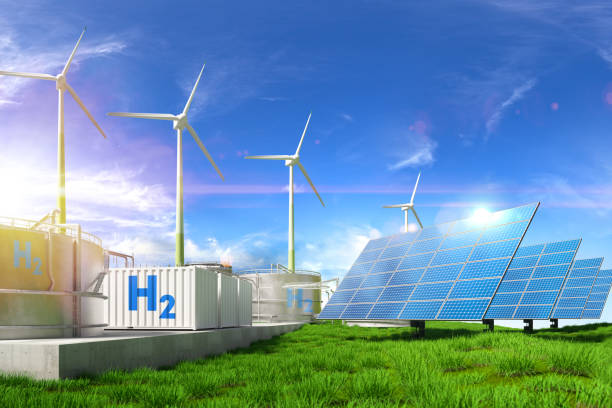Blue hydrogen is produced similarly to grey hydrogen, from fossil fuels or from non-renewable energy sources, but with a lower carbon intensity. Carbon emissions are lowered by capturing, storing and/or sequestering a portion of the total CO2 produced in the process. Commercial processes can capture up to about 90% of the CO2 produced. The cost of production is mainly influenced by the cost of feedstock, utilities, the incremental cost of CO2 handling (recovery, compression, storage, transport via pipelines, sequestration), and the carbon credits that often subsidise the overall cost of blue hydrogen. Carbon credits vary with geography, region, politics, lobbying, and other factors.
Green hydrogen is produced using renewable energy. It meets the lowest carbon threshold when clean energy sources are used to separate hydrogen from other compounds such as water molecules. Clean sources of energy include wind, solar energy, hydropower, and geothermal. Different factors affect the cost of green hydrogen. The first one is the cost of the process, for example electrolysis where hydrogen is produced from water using renewable energy. The cost of generating green energy has fallen significantly in the past decade. Green hydrogen presents a number of challenges in term of 24/7 availability of green energies for its production, overall production cost, and the limited volume that can be produced. Wind and/or solar energy can be used to produce green hydrogen, which can be temporarily stored during periods when there is low power demand, or can be repurposed.
Pipelines, liquefaction plants, trucks, storage facilities,
compressors, and dispensers

